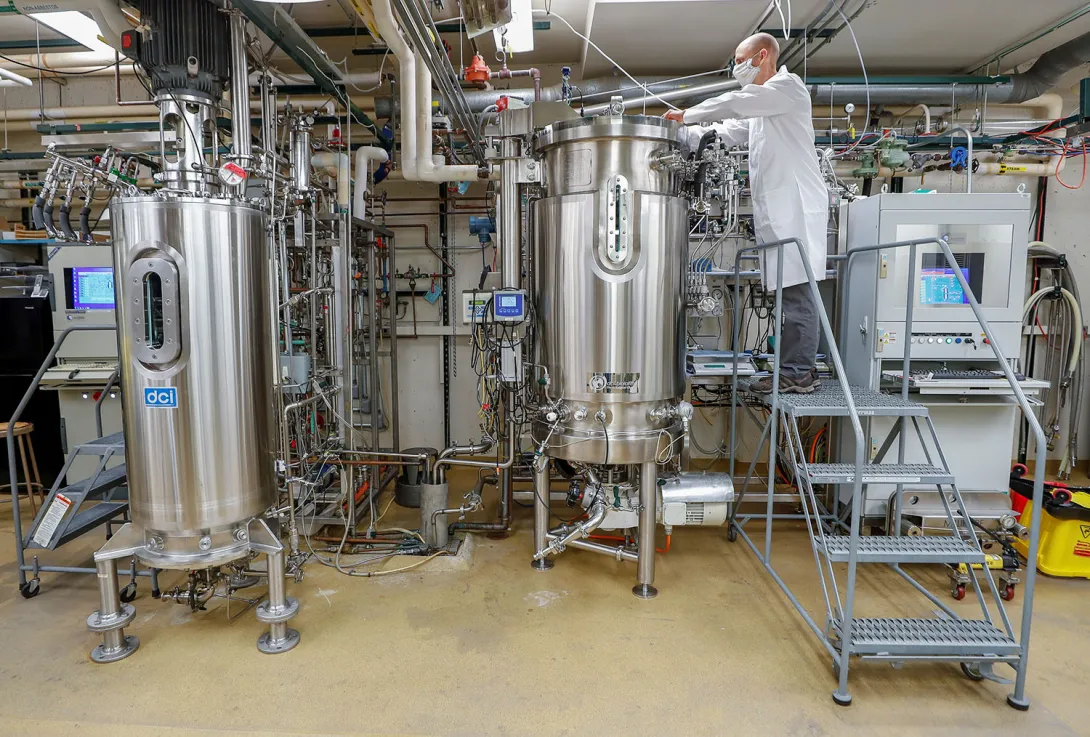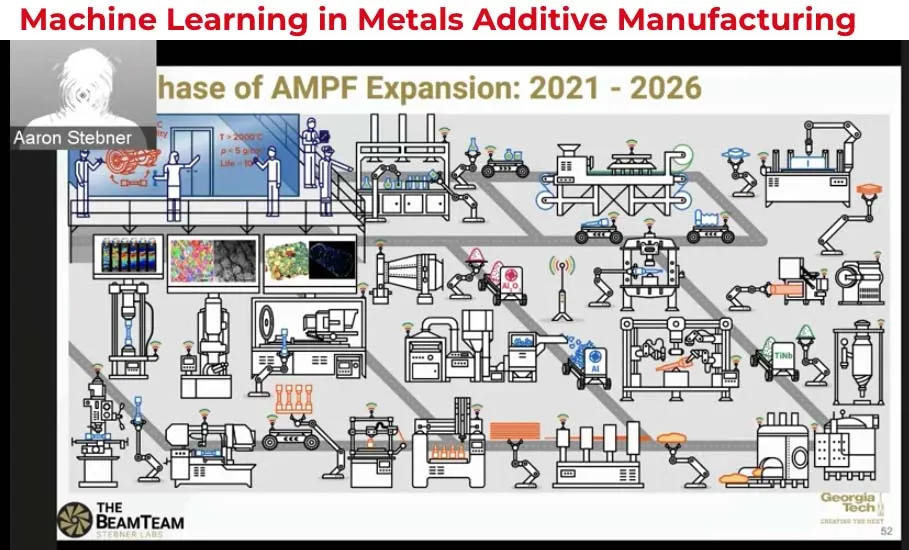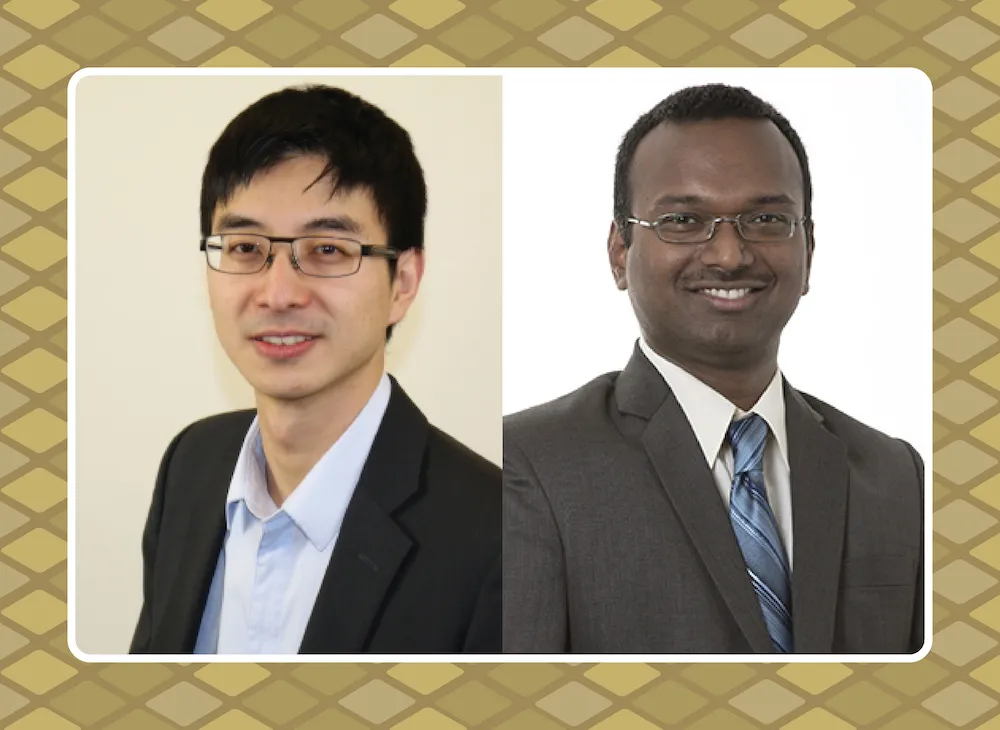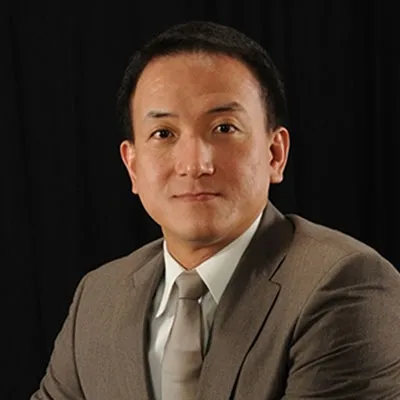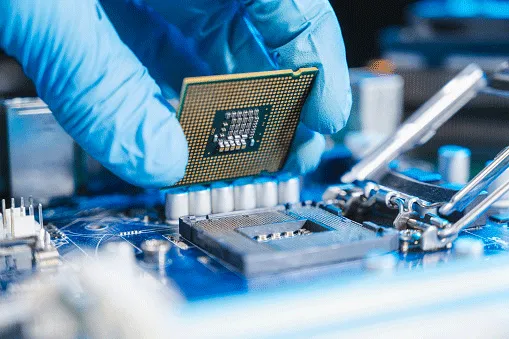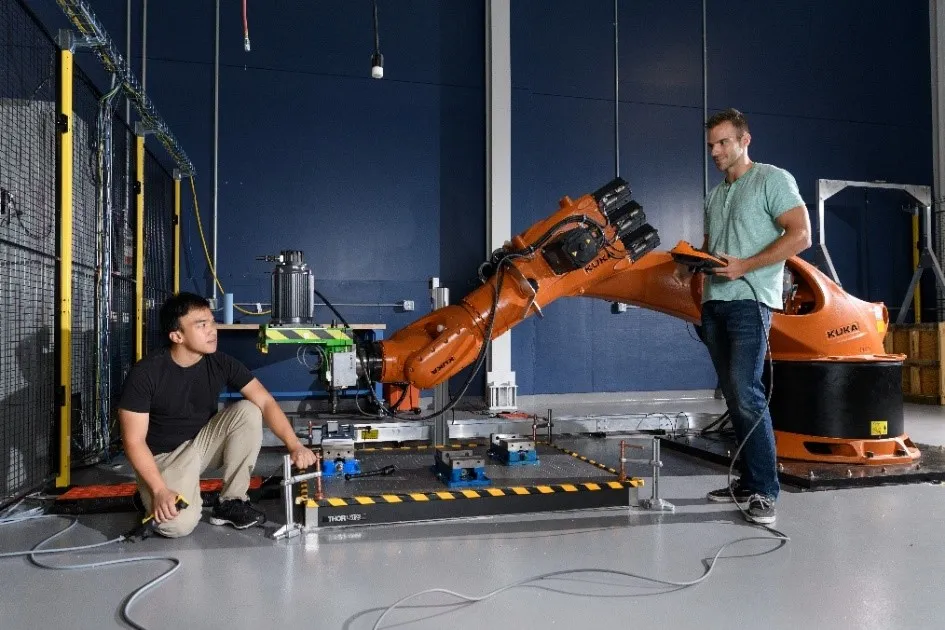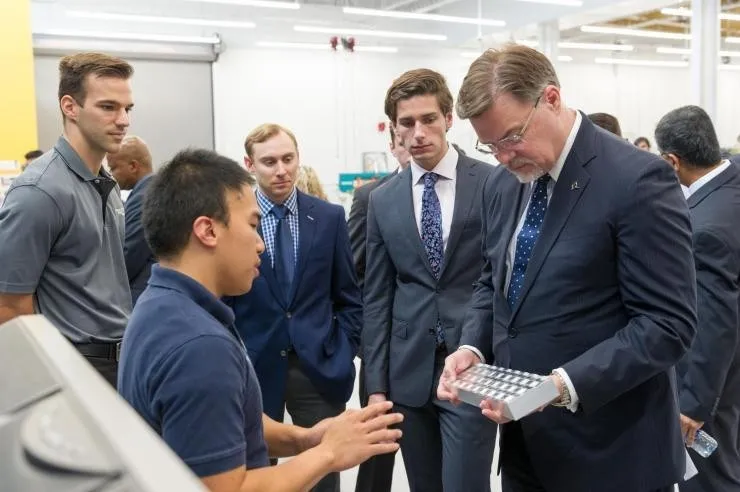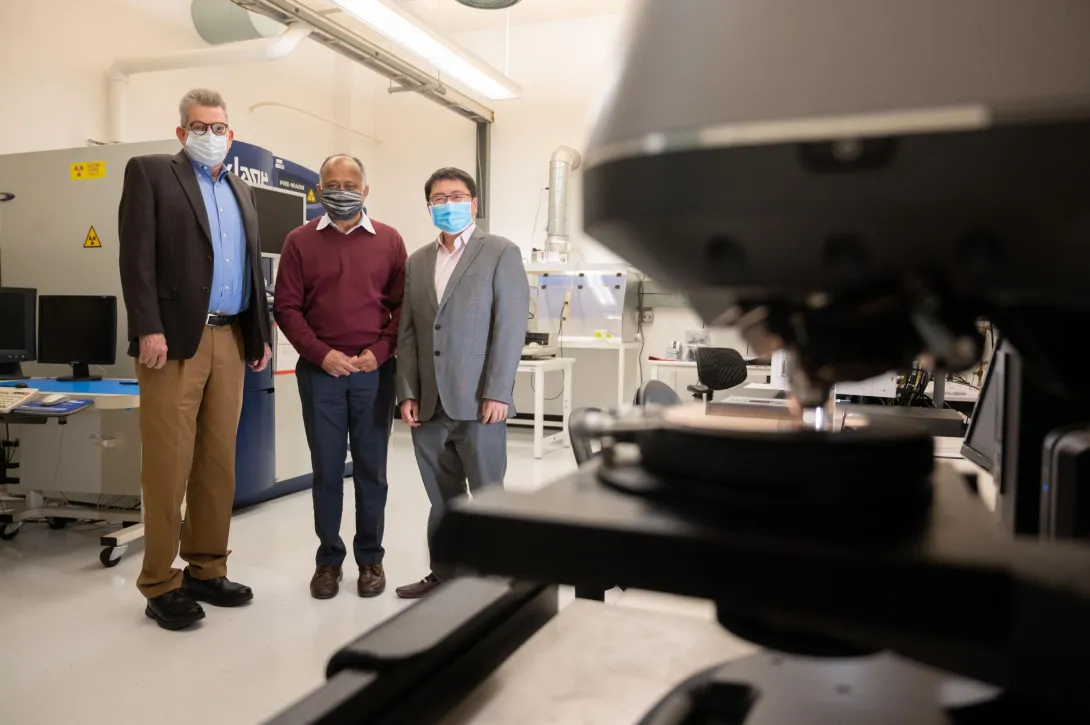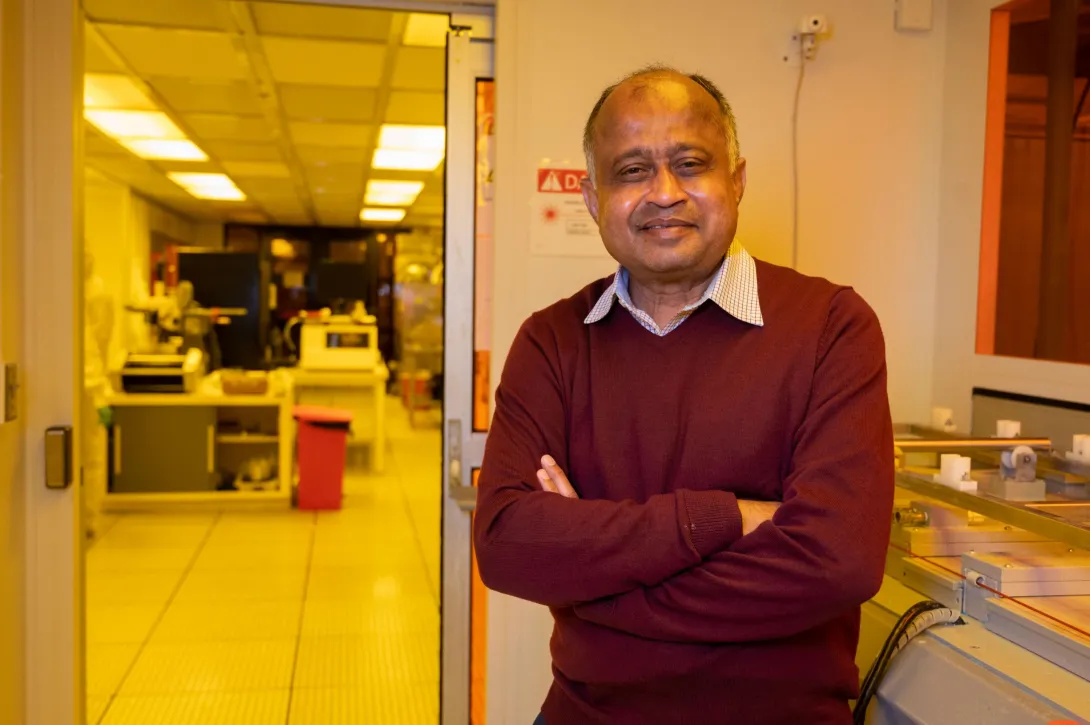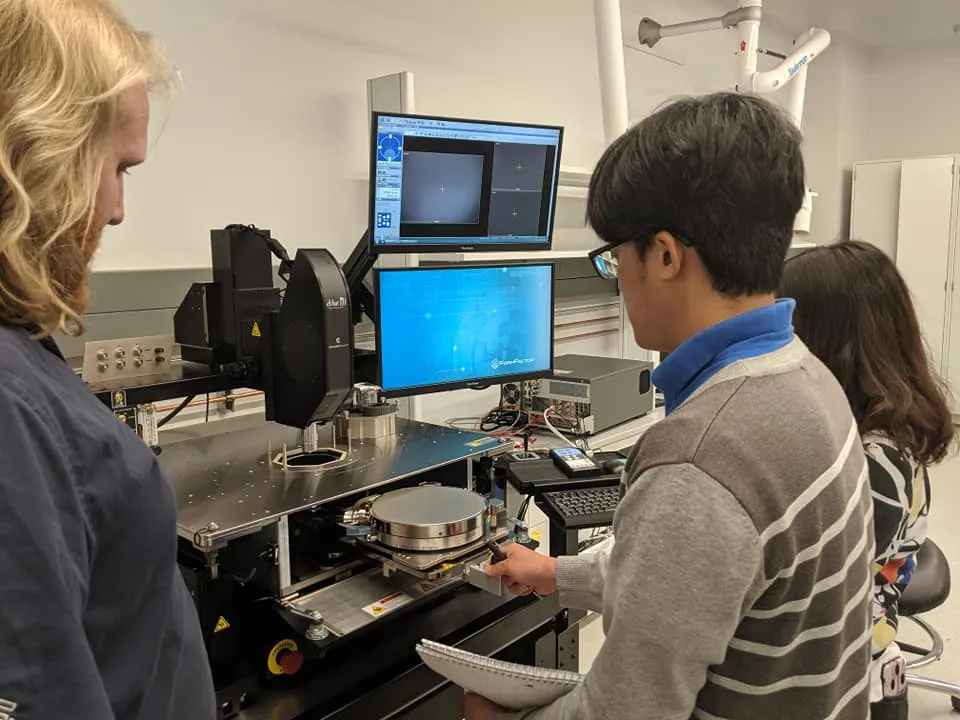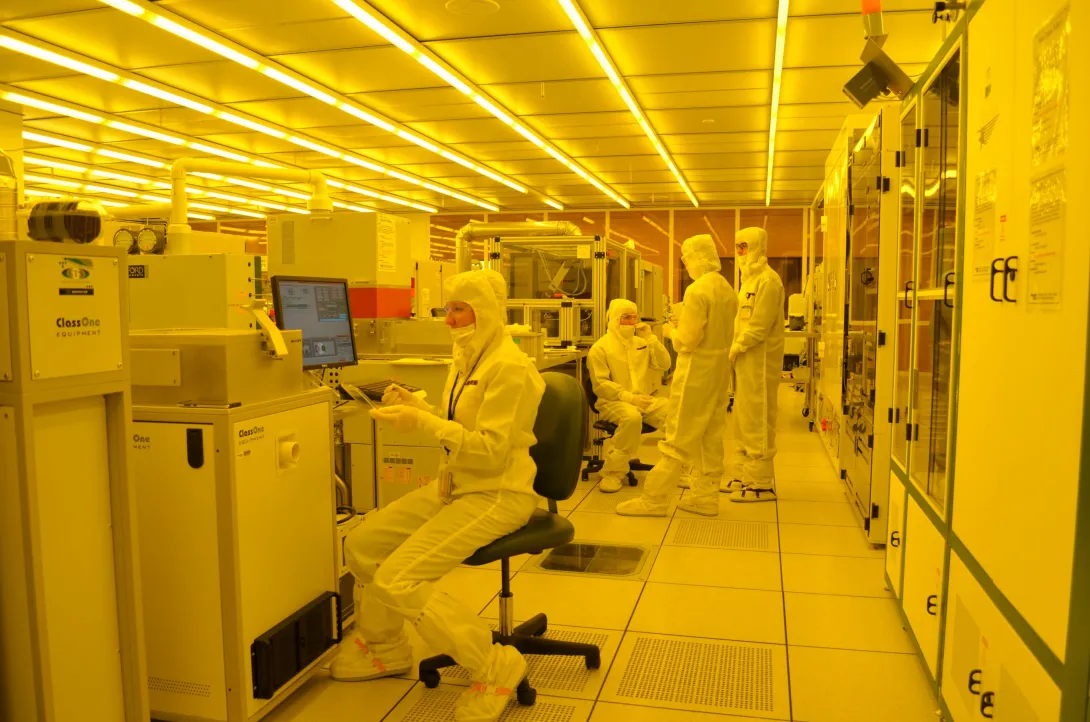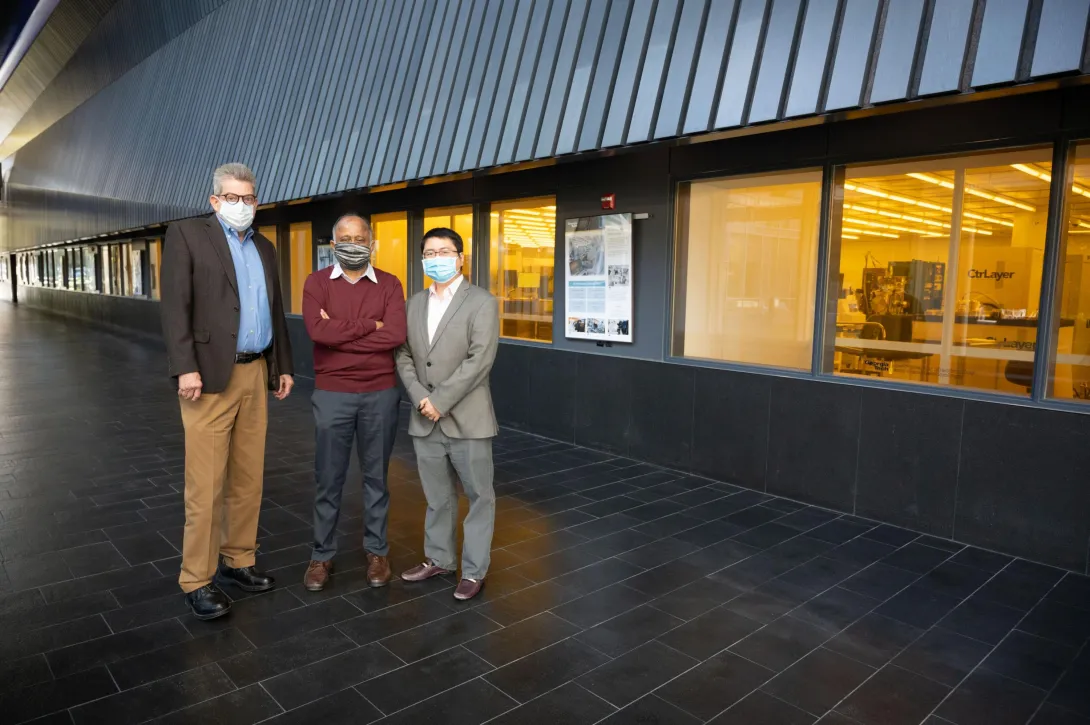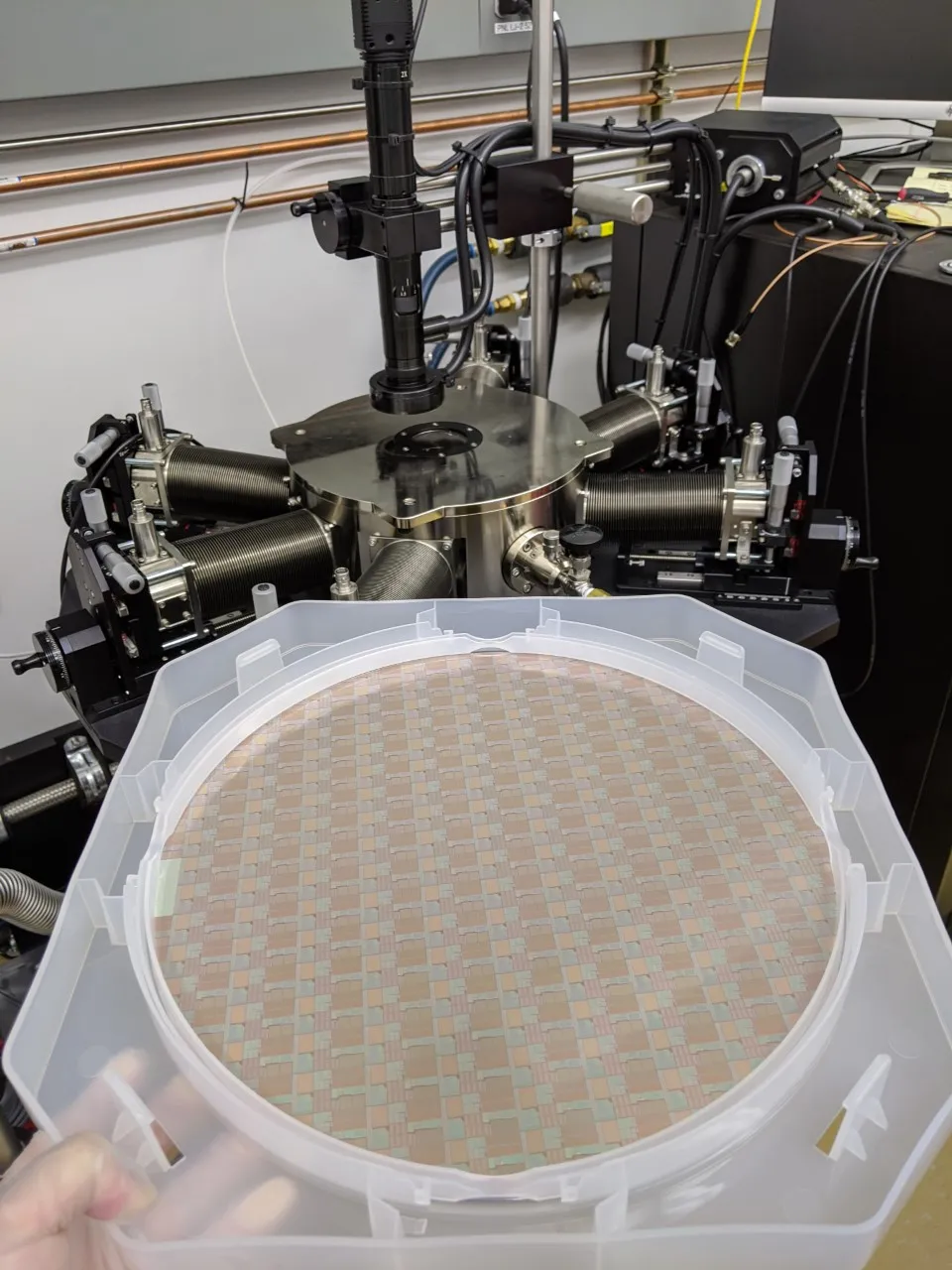Mar. 03, 2022
BioMADE, a Manufacturing Innovation Institute sponsored by the U.S. Department of Defense, has recently funded a research project at Georgia Tech entitled ‘Stress Testing Supply Chains and their Ecosystems for Levels of Trust, Security, Resilience, Agility, and Competitiveness’. Headed by faculty members Chip White, Kevin Wang, and Ben Wang, this project will design, develop, and validate a simulation platform to stress test end-to-end bioindustrial manufacturing facilities and supply chains resiliency over multiple risks with the intent of strengthening American competitiveness and creating more robust and resilient supply chains.
Bioindustrial manufacturing uses living organisms such as bacteria, yeast, and algae, to make new products or replacements for current products that are more sustainable and environmentally friendly than current processes.
The simulation platform will be a customizable decision support system that will target disruptions that may be faced by supply chains in the biomanufacturing industry. Understanding the impact on performance of each disruption can lead to supply chain design and operations changes that will produce improved levels of supply chain performance when disruptions occur.
“Although this project is initially focused on supply chain productivity at the product or firm level, it is also intended to provide insight into how investments in the bioindustrial ecosystem can improve bioindustrial supply chain supply chain performance while ensuring the Nation’s public health, defense, and economic security,” said White.
Understanding how performance at the product- and firm-level throughout the industry contributes to industry ecosystem performance, and vice versa, will help to inform both future product- and firm-level supply chain design and the development of the Nation’s bioindustrial ecosystem.
Chip White holds the Schneider National Chair of Transportation and Logistics and is a professor in the Stewart School of Industrial and Systems Engineering. Kan Wang, Ph.D., is a senior research engineer in the Georgia Tech Manufacturing Institute (GTMI). Ben Wang is executive director of GTMI, holds the Gwaltney Chair in Manufacturing Systems and is a professor in both the Stewart School of Industrial and Systems Engineering and the School of Materials Science and Engineering.
News Contact
Walter Rich
Mar. 01, 2022
By Frida Carrera
After almost a year of preparation, practice, and refinement, Georgia Tech’s annual InVenture Prize is down to six finalists competing in the final round on March 16th. In this televised round, the final teams will pitch their inventions to a panel of judges and compete for the top prize of $20,000, assistance in patent-filing, and a spot in CREATE-X’s Startup Launch program.
In its 14th year, the InVenture Prize competition features different innovations created by Georgia Tech students from all disciplines and backgrounds. For months prior to the final round, the finalists received coaching and assistance from mentors and coaches on building their prototypes, developing business models, and rehearsing their pitches to investors. The final six teams were chosen from previous preliminary and semifinal rounds that included a broad range of competitors.
The finals of the InVenture Prize will air live from Georgia Tech’s Ferst Center for the Arts at 7:30 p.m. on March 16th on Georgia Public Broadcasting.
The 2022 finalist teams are:
The Foambuster: The Foambuster is a unique handheld tool that allows construction contractors to drastically cut down on the mess, hassle, and money spent that comes with installing exterior insulation.
Edward Diller, Mechanical Engineering, Los Angeles, CA
Davis Waln, Mechanical Engineering, Atlanta, GA
Christophe Senghor, Mechanical Engineering, Peachtree City, GA
Katelyn Sand, Mechanical Engineering, Westlake Village, CA
Jaime Paris Meseguer, Mechanical Engineering, Spain
Magic Crop: An application that uses the power of Artificial Intelligence and the rule of thirds to format any number of inputted pictures into the perfect headshot within seconds and without ever sending any images to the cloud or to a third-party server.
Megan Dass, Computer Science, Woodbridge, VA
Reflex: Emergency Medical Drone Response System to deliver life-saving medical equipment.
Nevin Gilbert, Computer Science, Boulder, CO
Usman Jamal, Computer Science, Tucker, GA
Sola: Sola provides a data-driven supplemental insurance plan which covers immediate out-of-pocket expenses for US homeowners following losses from tornadoes.
Brayden Drury, Mechanical Engineering, Park City, Utah
Wesley Pergament, Mechanical Engineering, Old Westbury, NY
StrideLink: Accessible gait analysis wearable for remote monitoring of walking asymmetry.
Marzeah (Zea) Khorramabadi, Computer Engineering, Birmingham, AL
Cassandra (Cassie) McIltrot, Biomedical Engineering, Sykesville, MD
Neel Narvekar, Computer Engineering, Arcadia, CA
Tony Wineman, Electrical Engineering, Woodstock, GA
Tabnam: AI-powered shopping assistant that leverages the knowledge of user experience data.
SooHoon Choi, Computer Science, South Korea
Daksh Gupta, Computer Science, Noida, India
Robert (Davis) Liddell, Computer Science, Lutherville, MD
Ethan Perry, Computer Science, Wellesley, MA
To request tickets for the event visit: https://inventureprize.gatech.edu/form/inventure-prize-ticket-request-f
To learn more about InVenture Prize visit: https://inventureprize.gatech.edu/
Feb. 23, 2022
Aaron Stebner, associate professor in the School of Mechanical Engineering at Georgia Tech, was named one of the top 5 3D printing videos by the AM Chronicle due to his recorded seminar focused on "Machine Learning for Metals Additive Manufacturing".
This seminar was sponsored by the Georgia Tech Manufacturing Institute (GTMI) and was presented live on March 8, 2021. Stebner is also a faculty member of GTMI.
Below is AM Chronicle's short article with link to the original posting:
AM Chronicle content team brings to you the top 5 trending and informative videos on metal 3D printing.
Metal Additive manufacturing is one of the most trending sectors in the additive manufacturing industry. The technology was initially considered impossible due to the complex material science behind the melting and solidification of metals and its integration with the 3D printing layer-by-layer approach. But today, metal additive manufacturing is widely accepted in the industry and considered to be an essential part of Industry 4.0. Go through some of the interesting content presented by AM Chronicle on metal 3D printing videos.
Link to the full AM Chronicle article with the top 5 3D printing videos:
https://www.amchronicle.com/insights/top-5-informative-videos-on-metal-3d-printing/
Past Georgia Tech Manufacturing Institute seminars can be found here:
https://research.gatech.edu/manufacturing/pastlectures
News Contact
Walter Rich
Feb. 18, 2022
Two faculty members from the H. Milton Stewart School of Industrial and Systems Engineering received CAREER awards from the National Science Foundation (NSF), recognizing early-career contributions in both research and education. Assistant Professors He Wang and Siva Theja Maguluri received the award, the most prestigious of its kind awarded by the NSF, which carries a five-year term.
In addition to $500,000 in funding, which will help support the faculty member as well as their team of Ph.D. students, Wang said it provided recognition and validation for their respective research agendas.
“It’s great because it helps fund our work and will provide opportunities to support our students in this continued research,” he said. “But it also helps us to build connections with industry partners, who see the importance of our work, and allow us to implement some of it into the real world.”
Wang’s research focuses on supply chain and logistics in transportation. This particular award will fund research that seeks to design digital marketplaces for the freight industry. Describing it as a rideshare, like Uber, for trucking, Wang said that the goal of the research is to design online digital marketplaces that help truckers connect with shippers, eliminating a brokerage process plagued by inefficiency that can cost drivers both time and money.
“The idea here is to improve supply chain efficiencies and also the earning reliability of these truck drivers,” he said.
For an industry that is among the largest in the country, and indeed the most popular in more than half the country’s states, the research could have far-reaching implications.
Maguluri’s research, meanwhile, addresses optimization challenges in reinforcement learning and cloud computing, both of which are key areas of progress in the ongoing artificial intelligence revolution. The revolution is powered by the development of novel algorithms and breakthroughs in cloud computing infrastructure that can collect, store, and process large amounts of data.
“Even though neural networks were known about 50 years ago, AI breakthroughs only happened in the last 15 years,” Maguluri said. “This is because computers weren’t powerful enough earlier, and it was hard to get access to large computing power.”
Now, AI researchers can utilize massive data centers run by companies like Amazon, Microsoft, or Google.
Despite the progress, however, there are tradeoffs that affect optimal performance, and theory often lags behind practice. With this award, Maguluri and his lab will pursue studies in both reinforcement learning and cloud computing to develop optimal scheduling algorithms for cloud computing data centers that make both more efficient and, thus, further advancement in the field.
To read more about Wang’s and Maguluri’s research, follow the links below:
He Wang: Marketplace Design for Freight Transportation and Logistics Platforms
Siva Theja Maguluri: Lyapunov Drift Methods for Stochastic Recursions: Applications in Cloud Computing and Reinforcement Learning
Feb. 15, 2022
Yentai Wan currently serves as Lead Director of the Network Planning & Optimization (NPT) Program in the UPS Corporate Industrial Engineering group. As a critical part of the UPS Smart Logistics Network Strategy, the NPT Program provides visibility across its transportation network by utilizing predictive analytics, simulation, and operations research algorithms. These capabilities help provide the needed insight to make better, faster decisions as well as provide cost effective results at a high quality of service.
Dr. Wan has demonstrated intrapreneurship by building a profitable start-up department and mobilizing top-tier talent to create high performing cultures that consistently achieve business goals in a dynamic and volatile business environment. His primary responsibilities are to (a) improve network planning processes, (b) generate network efficiencies, and (c) support strategic initiatives across the enterprise through institution of an elastic and self-healing network optimization platform. Yentai joined UPS in 2007 as an Enterprise Network Planning Manager in Corporate Transportation and also served as Director of Transportation Operations Research & Analytics.
Yentai was born and raised in Taipei City, Taiwan. He came to the United States in 2000 to advance his education and later earn a Ph.D. in Industrial Engineering (ISyE) from the Georgia Institute of Technology. Prior to joining UPS, he served as investigator of research projects sponsored by the National Science Foundation and as an R&D Scientist in an industry-leading supply chain software company. Dr. Wan lives in Alpharetta, Georgia and when not working, enjoys traveling across North America and Northeast Asia.
The Georgia Tech Supply Chain and Logistics Institute is honored to have part of the Georgia Tech and ISyE family rejoin us to help shape our future.
Jan. 31, 2022
When it comes to a topic as complex as international trade, it can be hard to understand all the forces pushing and pulling on governments and to get at what prompts them to fall back in line — or not — when they are found in violation of the rules.
Political scientists who study the World Trade Organization, for instance, have long believed states faced with a trade complaint often change course under pressure from firms concerned about the potential impact of enforcement sanctions.
Alasdair Young, professor and Neal Family Chair in the Sam Nunn School of International Affairs, turns that narrative on its head with a carefully researched volume, in which he concludes that when it comes to the European Union, at least, decisions to comply with WTO rulings are more about ensuring that the EU can continue to advance its interests as a major exporter through the WTO.
“They don’t want to encourage bad behavior by others or get a reputation as an unreliable partner,” said Young, who has been studying WTO compliance since 2008.
Five Case Studies
His new book, Supplying Compliance with Trade Rules: Explaining the EU’s Responses to Adverse WTO Rulings, arrives at this conclusion through detailed analysis of illustrative WTO rulings using process tracing, an analytic technique often used by social science scholars to get at the root causes of an event.
Young examines five episodes — complaints over beef, bananas, genetically modified crops, sugar, and bed linens. He finds that, despite the conventional wisdom that exporters worried about sanctions drive the compliance process — what he labels a demand-side explanation — officials want to avoid encouraging others to neglect the rules or being seen as a bad actor themselves that carries more weight.
“The absence of exporter pressure is despite the WTO being an easy case for the demand-side explanation of impact, given its capacity to authorize enforcement tariffs. Rather, the impetus for change has come from the supply-side, the greater engagement of trade officials in challenged non-trade policies and their changed preferences with respect to challenged trade policies,” Young writes in his book.
“The preferences of the officials responsible for the non-trade policies, however, were not affected by the adverse rulings. Thus, while the intention to comply was accepted, what policy change would constitute compliance was contested within the EU policy process. When this occurred, policy change was often limited and left the EU’s trade partners dissatisfied,” Young wrote.
Contributions to the International Relations Literature
The book adds to existing international relations literature by showing that the preferences of policymakers matter more than demands from societal actors in determining whether policy change happens and what form it takes, Young said. It also demonstrates that “the importance policymakers attach to consistency with WTO rules varies predictably, and those policymakers who are concerned with WTO compliance are influenced more by rationalist considerations than by constructivist ones.”
“With respect to the literature on the WTO’s effectiveness and legitimacy, I argue that while policy change in response to adverse rulings is the norm, which is good news for effectiveness, WTO members can and do resist obligations that would compromise particularly cherished policy objectives That is good news for legitimacy,” Young said.
The book also has lessons for the ongoing debate over WTO reform, delayed by the organization’s decision to postpone its most recent ministerial meeting due to Covid-19 concerns.
“The book helps to explain the U.S.’s frustration that even successful WTO complaints do not always translate into meaningful policy change, which has contributed to the U.S. blocking the functioning of the dispute settlement system,” Young said. “However, I also make the case that WTO members comply in the vast majority of disputes. The system, therefore, is valuable to the U.S. as a major exporter. This suggests that it would be in the U.S.’s interests to allow the dispute settlement system to resume functioning even as it seeks to reform it.”
Supplying Compliance With Trade Rules is published by Oxford University Press. It is available from the Georgia Tech Library.
It is Young’s fifth book. He has authored three since he joined the Nunn School, including The New Politics of Trade: Lessons from TTIP and Parochial Global Europe: 21st Century Trade Politics. He is also co-editor of Policy-Making in the European Union.
The Nunn School is a unit of the Ivan Allen College of Liberal Arts.
News Contact
Michael Pearson
michael.pearson@iac.gatech.edu
Jan. 21, 2022
Even a global pandemic cannot slow the acceleration of new technologies and evolving technologies that has become the disruptive norm of our lives over the past decade.
Big data, global connectedness and the digitization of almost everything are driving a whirlwind of change that touches every aspect of our lives.
Georgia Tech continues to be at the center of that of that maelstrom of progress, pushing the cutting edge, developing and influencing advances and being an insistent voice for ensuring those advances are shared as broadly as possible.
Five faculty members share what they see as major forces impacting the coming year and beyond.
Microchip shortage will drive manufacturing to US and other supply chain changes
One of the big technology and supply chain stories of 2021 was the global shortage of microchips that impacted huge parts of the business world. One of the more visible impacts of that shortage was in the automotive field.
According to industry experts, the microchip shortage cost the automotive business $210 billion in revenue in 2020 driving prices up for new and especially used vehicles throughout the year. Dr. Madhavan Swaminathan, Georgia Tech’s John Pippin Chair in Microsystems Packaging and Electromagnetics, says the industry’s focus on finding solutions will bring noticeable change in the coming year.
He says early word of a trend in moving chip manufacturing to the United States will become a big focus in the coming year as well as auto manufacturers and other industries re-examining just-in-time supply decisions as they build inventory.
Advances in addressing bias in AI bolsters inclusion
In computer science circles, it is no longer any sort of surprise that there can be bias in certain applications of artificial intelligence and machine learning. Bias can stem from a range of factors from the data used to software design to the situation where AI is being used.
How to know what to show each user with different world views in search or newsfeeds is quite different than making sure that software used for healthcare works for everyone. For example, sometimes a data set, even a quite large one, may not be representative.
There are close to 100,000 cases of skin cancer in the U.S. a year, and it is difficult to detect, especially the darker someone's skin tone is.
Machine learning researchers are making huge advances in detecting skin cancer, but a big limit is that the data they are using comes from light-skinned populations.
Knowing this problem exists opens the door to using data and artificial intelligence to improve detection for all. Dr. Deven Desai, a law and ethics professor in Georgia Tech’s Scheller College of Business, says in the coming year, because this potential for bias is known, we will become much better at identifying bias from wherever it may come and addressing it to limit harm.
The focus in the coming year will be on making the searching and sifting tools of AI and machine learning more attuned to potentially skewed results. This focus will bring better, more inclusive results.
Watch the video: A Good Challenge: The Future of AI
Digital twins drive safety, efficiency and savings in construction
Think of them as the ultimate in interactive blueprints that can actually communicate to owners about building performance. The idea of a digital twin is not new. Building an exact match, digital version of a construction project is commonplace in construction now and has been for years. Architectural drawings, CAD images, or BIM images would all be considered “twins” in a way.
The advances that are happening now with true digital twins and that will be taking off in the coming year are in what you can do with and learn from a much more robust digital twin.
"Digital twinning is about the building and all the components that are in the building. Where they are, what condition they're in, all kinds of qualities," says Russell Gentry director of the Digital Building Lab at Georgia Tech.
In the coming year, Gentry expects the idea of using a digital twin will grow as its uses expand - monitoring for maintenance needs, identifying potential problems like leaks or water damage, dialing in HVAC system efficiencies - just a few of the changes that are happening or soon will be. Digital twins will be used to improve building safety, efficiency and even retrofitting existing buildings with new and improved technologies.
The automation and improvements that can be achieved will be a powerful force in construction and building management.
Technology led up-skilling drives job agility that will increase worker satisfaction and productivity
In the U.S. alone, November 2021 saw more than four and a half million people quit their jobs, the biggest spike on record and continuing a streak of transition and upheaval. As the pace of change continues to increase, we need to be able to rapidly reconfigure workforces to address new challenges.
Ashok Goel, professor of computer science and human-centered computing in the School of Interactive Computing, has been watching the rapid changes in the job market. He sees technology as a solution to reskilling employees.
“It is critical that we leverage technology to develop better tools to sync up employers and educators so that job seekers have clear paths to reskilling,” Goel says.
Using AI to match workers to jobs, to improve job performance and satisfaction are just a few of the efforts in the coming year that will ultimately result in improved worker well-being and productivity as well.
Covid public health crisis leads to public policy evolution
The pandemic has defined very clearly a strain in the relationship between scientists and some segments of the general public.
Some public policy makers, as a reflection of that divide, have made decisions related to public health that do not always match generally accepted science. For academic leaders in public policy like Dr. Cassidy Sugimoto, the Marie Patton School Chair in the School of Public Policy at Georgia Tech, this is one of the biggest challenges our society and people making public policy will face in the coming years.
Bridging the divide made clear by Covid and building the relationships that will result in better policy will be an effort that will have impact for decades.
“In many ways we’re setting the stage for the other looming global crises that we’re being faced with like climate change, like issues around social justice.
All of those are going to take the same kind of navigation in communication between the public between science and between policy makers and not just within regions but globally,” said Sugimoto.
It’s a challenge that she and her colleagues have dedicated their careers to taking on.
Watch: Public Policy and the Pandemic
For more trends and in-depth predictions, read: The Year Ahead: Trends to Watch in 2022
News Contact
Blair Meeks
Assistant Vice President External Communications
wmeeks7@gatech.edu
404-894-9793
Jan. 21, 2022
This country’s semiconductor chip shortage is likely to continue well into 2022, and a Georgia Tech expert predicts that the U.S. will need to make major changes to the manufacturing and supply chain of these all-important chips in the coming year to stave off further effects.
That includes making more of these chips here at home.
Madhavan Swaminathan is the John Pippin Chair in Electromagnetics in the School of Electrical and Computer Engineering. He also serves as director of the 3D Systems Packaging Research Center.
As an author of more than 450 technical publications who holds 29 patents, Swaminathan is one of the world’s leading experts on semiconductors and the semiconductor chips necessary for many of the devices we use every day to function.
“Almost any consumer device that is electronic tends to have at least one semiconductor chip in it,” Swaminathan explains. “The more complicated the functions any device performs, the more chips it is likely to have.”
Some of these semiconductor chips process information, some store data, and others provide sensing or communication functions.
In short, they are crucial in devices from video games and smart thermostats to cars and computers.
Our current shortage of these chips began with the Covid-19 pandemic. When consumers started staying at home and car purchases took a downward turn, chip manufacturers tried to shift to make more chips for other goods like smartphones and computers.
But Swaminathan explains that making that kind of switch is not simple. Entire production operations have to be changed. The chips are highly sensitive and can be damaged by static electricity, temperature variations, and even tiny specks of dust. The manufacturing environments must be highly regulated, and changes in the process can add months.
The pandemic highlighted another challenge with the semiconductor chip industry, according to Swaminathan.
“There’s a major shortage of companies making chips,” he says. “If you look worldwide, there are maybe four or five manufacturers making 80-90% of these chips and they are located outside of the United States.”
This creates supply chain hiccups with the raw supplies needed to make these chips as well. Add in the fact that many of these companies only design their chips – they don’t manufacture them directly.
“American consumers use 50% of the world’s chips,” Swaminathan says, which creates a serious challenge when the overwhelming majority of those chips are manufactured in other nations.
In the short term, the costs of the chip shortage is being passed on to the consumer. We see this directly with products like PlayStations and Xboxes that are more and more expensive and harder to purchase when the chips necessary for the consoles to function are in short supply.
Beyond 2022, Swaminathan says we need to work to revitalize the industry domestically.
“We need to bring more manufacturing back to the United States,” he says. “The U.S. government has recognized the importance of this semiconductor chip shortage and is trying to address the issue directly.”
That means investing in new plants to manufacture the chips, but America's journey toward chip self-sufficiency will continue to be a work in progress.
“This is a cycle,” Swaminathan explains. “But this is probably the first time where it has had such a major effect in so many different industries.”
But consumers can take direct action on their own in the coming year. “Reduce the number of times you purchase or upgrade electronic devices like phones and cars,” he says. “Then it becomes just a supply problem, not a demand and supply problem.”
Jan. 05, 2022
While deciding on career paths as an undergraduate, Boeing engineer Toni Cvitanic sampled courses in biology, chemistry, engineering, and computer science. But it wasn’t until joining an intercollegiate car-building competition—where he and other college students worked to design and fabricate formula-style racing cars and competed against other clubs— that his aspirations came into focus.
The son of a mathematics professor, Cvitanic marveled at how his math and science skills could steadily improve a race car’s performance. And yet, over time, he realized that the engineering question at hand was not audacious enough. The basic facts of each car—that it would have four wheels, an engine, a suspension—would not change from one model to the next, and any improvement would have to be incremental.
“I realized I wanted to work on new problems that haven’t been figured out,” he recalled. “Problems where you don’t necessarily know the solution or even how one might work.”
Instead of following in his father’s footstep, Cvitanic set his sights on engineering and began pursuing a Ph.D. in robotics from Georgia Tech.
In 2016, Cvitanic joined the Technology Transition Laboratory (TTL), born out of a longstanding university partnership between Boeing and Georgia Tech. For Cvitanic, joining the TTL meant working on projects with a much higher TRL, or technology readiness level, than most academic research—making the ideas much more likely to become applied on the factory floor at Boeing.
Cvitanic helped lead the TTL’s research into dual robotic machining, which could one day be used for automated precision machining and fabrication. The aim was to improve the accuracy of industrial robots—commonly used in automotive manufacturing—so they could meet more stringent aerospace tolerance requirements.
To meet tolerances within five-thousandths of an inch, or slightly wider than a human hair, Cvitanic’s team needed a new approach.
Working alongside three Boeing engineers who oversaw the work, they added sensors and a laser tracker to a pair of off-the-shelf Kuka industrial robots. While one robot held an aluminum work piece, the other would begin an assigned machining activity: either milling or drilling holes. As the Georgia Tech team observed the robots, they received real-time performance data and control feedback.
The significant process forces from both kinds of operations caused the arms of the robots to vibrate and flex, which in turn affected the final achievable tolerance of the work. With the data they gathered, the researchers began to model how specific robotic arm configurations, or poses, could counter resisting forces and improve precision. This led to improvements in the robots’ arm stiffness, and it also eliminated bending, both vital to offsetting the effects of high-force manufacturing. Ultimately, the team configured the robots to manufacture parts to aerospace tolerances, and they were able to meet the accuracy requirements achieved with machine tools and gantry-style crane systems, which are used in today’s manufacturing processes.
The Georgia Tech researchers made enough progress to host a successful live demonstration in front of a Boeing audience. The results furthered the Boeing-Georgia Tech university partnership and led to the creation of the Accurate Robotic Machining (ARM) project and the Boeing Manufacturing Development Center (BMDC) in 2017. The center gives future students opportunities to work on projects from the concept stage to application.
After earning his doctorate, Cvitanic joined Boeing in October 2021. He parlayed the experience he gained and the relationships he built as a graduate student into a new role. As a manufacturing and simulation engineer based in Charleston, South Carolina, he works in Boeing’s Research and Technology organization. He regularly partners with the very engineers who helped guide his project work at Georgia Tech, and together, they explore scenarios in which advanced production systems can be implemented.
“Ultimately, I know I will see the impact of what I’m working on,” Cvitanic says of his role at Boeing. “That impact is gratifying.”
MEDIA CONTACTS:
Walter Rich
Georgia Tech Research Communications
walter.rich@research.gatech.edu
News Contact
Walter Rich
Dec. 20, 2021
The world’s dependence on semiconductors came into sharp focus in 2021, when automotive manufacturing ground to a halt because of massive computer chip shortages – as Asian suppliers couldn’t keep up with demand for microelectronics – miniaturized electronic circuits and components that drive everything from smartphones to new vehicle components to hypersonics weapons systems.
The culprit was global supply chain disruptions caused by the Covid-19 pandemic. The crisis has highlighted the pressing need for the U.S. to bolster its domestic semiconductor supply chains and industrial capacity, after three decades of decline as a semiconductor producer. The U.S. share of global semiconductor fabrication has dropped to 12% today, compared to 37% in 1990, according to the Semiconductor Industry Association (SIA). In addition, the semiconductor industry today only accounts for 250,000 direct U.S. jobs.
As the country rebuilds its semiconductor infrastructure at home, Georgia Tech serves as a vital partner – to train the microelectronics workforce, drive future microelectronics advances, and provide unique fabrication and packaging facilities for industry, academic and government partners to develop and test new solutions.
“We’re one of the only universities that can support the whole microelectronics stack – from new materials and devices to packaging and systems,” said Madhavan Swaminathan, the John Pippin Chair in Microsystems Packaging in the School of Electrical and Computer Engineering and director of the 3D Systems Packaging Research Center.
